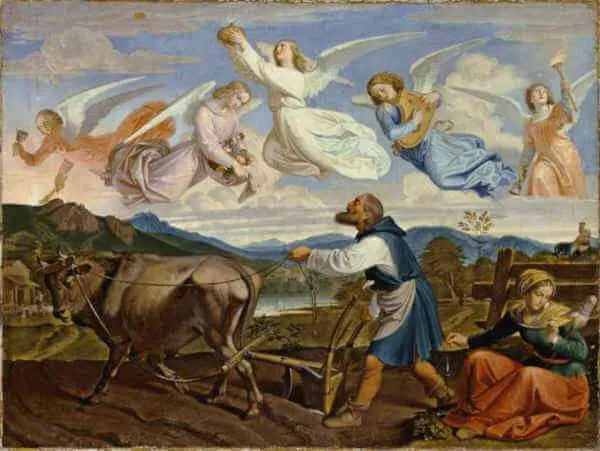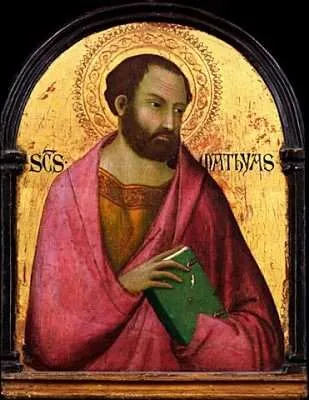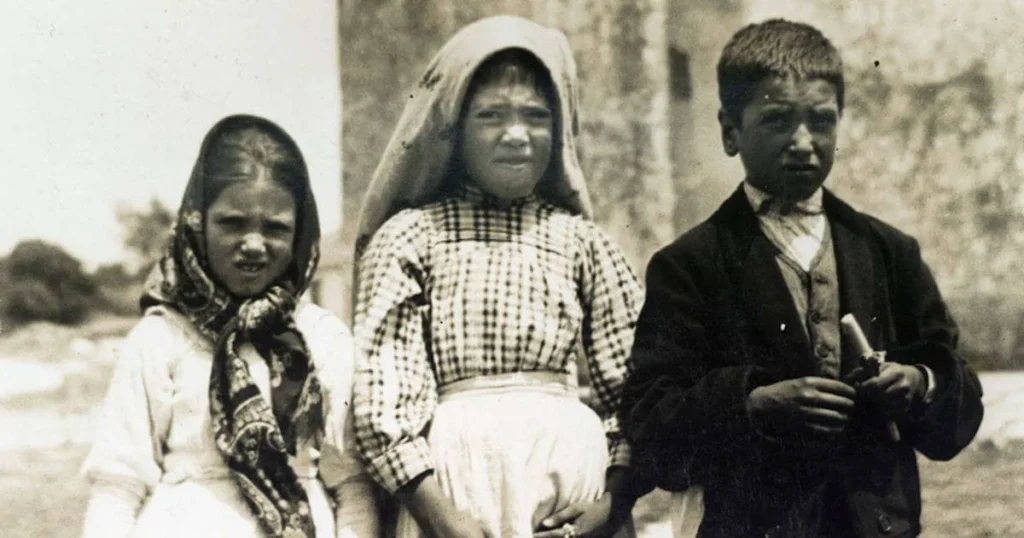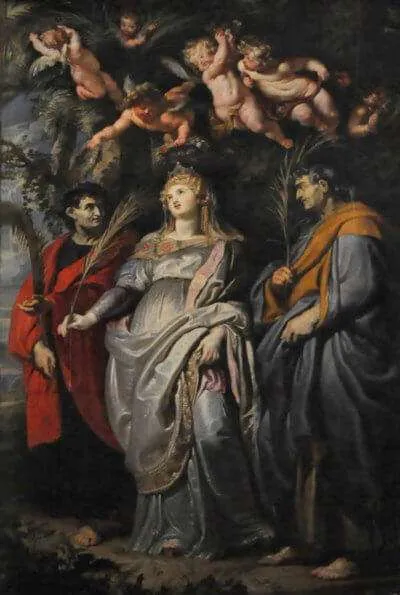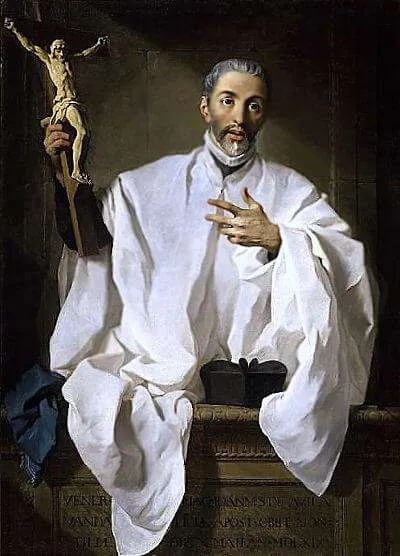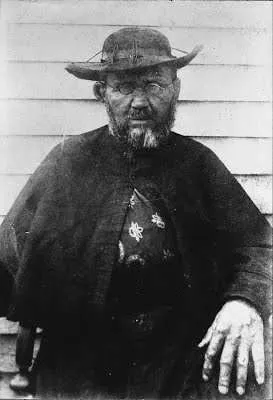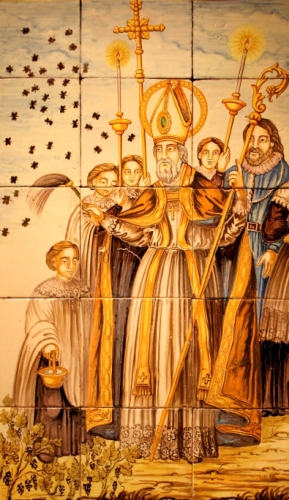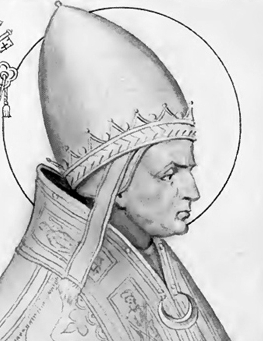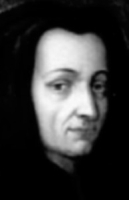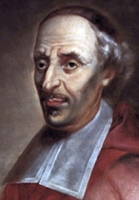Saint Isidore the Farmer
c. 1070–c. 1130; Patron Saint of Madrid, farms, farmers, bricklayers, and rural communities; Invoked against the death of a child; Canonized by Pope Gregory XV, March 12, 1622
Saint Isidore, whom we honor today, is often called Isidore the Laborer, or Isidore the Farmer. He was an ordinary man, husband, and father who lived a humble and simple life working the fields for a landowner. His extraordinary faith, by which he always sought first the Kingdom of God, sets for us an excellent example of achieving extraordinary sanctity in the ordinary grind of daily work.
Isidore was born into material poverty in Madrid. His parents, however, were rich in virtue and fostered in him a deep faith. At his baptism, he was given the name Isidore, after Saint Isidore of Seville, the great Spanish scholar and bishop of Seville who lived about 500 years earlier. Because of the family’s poverty, Isidore the Laborer did not receive an education. Instead, from a young age, Isidore worked as a hired hand for a wealthy landowner. The landowner grew very fond of Isidore and treated him as a son, even entrusting him with the management of his estate. It is believed that Isidore lived for sixty years as a laborer, but other speculation is that he may have died around the age of forty.
What is it that elevated this humble and simple man to the ranks of the saints of the Church? To begin, Isidore is said to have been exceptionally generous to the poor. Though poor himself, he and his wife regularly distributed the little they had to those who were in even greater need. He is also said to have been a man of deep prayer. He would regularly attend daily Mass before work, putting God first every day. And as a result of his intercession, miracles abounded, not only during his life but also after his death.
Isidore and his wife had one son. One legend states that their infant child fell into a large pit. Isidore and his wife prayed fervently, and suddenly, the water in the pit began to rise. Very soon, the water had carried the boy to the surface, and Isidore and his wife were then able to pull him out.
Another legend states that because Isidore attended Mass each morning, he showed up later to work than the other hired hands. When the landowner received complaints that Isidore was late for work, he decided to investigate. Sure enough, the landowner discovered that Isidore was regularly later than the others. When the landowner went to confront Isidore about this, he was met with a great surprise. As he walked toward Isidore plowing in the field, he saw that there were others plowing alongside him who looked like angels, using angelic-looking oxen. Thus, God rewarded Isidore with the help of angels to accomplish even more work than the others because Isidore put God first every day.
Isidore also cared for all of God’s creatures with great concern. According to one legend, on a winter day, when Isidore was carrying a sack of grain to be milled, he saw some hungry birds and shared some grain with them, prompting criticism from a coworker. But after Isidore’s diminished sack of grain was milled and returned to him, he had twice as much flour as the others.
Other legends describe Isidore as bringing his landowner’s daughter back to life, raising a spring of water in a dry place to give drink to the thirsty, and producing a full pot of food to feed poor, hungry visitors.
Isidore’s wife, Maria, was also believed to be quite saintly. When their only son died at a very young age, the couple made a promise of celibacy and jointly dedicated themselves solely to God. In Spain, Maria is referred to as Santa María de la Cabeza (Saint Mary of the Head). Miracles have been attributed to her, and to this day, the relic of her head is carried in procession. It is believed that, through her intercession on multiple occasions, rain has fallen in the countryside during droughts.
After Isidore’s death, the miracles continued. Alfonso VIII, King of Castile, during a battle with the Muslims, reportedly had a vision of Saint Isidore who directed him and his army down a path of victory in 1212. That same year, after a flood, Saint Isidore’s body was miraculously exhumed from his grave and found to be incorrupt. Centuries later, when Phillip III, King of Spain, touched Saint Isidore’s body, he was miraculously cured of a serious illness. In all, there have been more than 400 miracles attributed to Isidore’s intercession throughout the centuries.
Another great honor given to this simple, poor, and humble farmer came at his canonization by Pope Gregory XV in 1622. He was canonized at the same time, in the same ceremony, with some of the most recognized and beloved saints in the history of the Church: Saints Ignatius of Loyola, Francis Xavier, Teresa of Ávila, and Philip Neri.
Saint Isidore is the patron saint of Madrid, and his feast is widely celebrated in that town and throughout Spain. He is also honored in many rural communities in Chile, Nicaragua, Peru, Philippines, and the United States. Saint Isidore is a saint for the working man. While at work, he prayed continuously, offering his work as an act of love to God. Saint Isidore’s life magnifies the dignity of work, and shows the common laborer the path to sanctity. Daily work and toil have the potential of being a way of honoring God. Saint Isidore put God first in his life. From his faith and love of God, his work, charity, and dignity shone forth.
Source: https://mycatholic.life/saints/saints-of-the-liturgical-year/may-15—saint-isidore—usa-optional-memorial/
Saint Isidore the Farmer Read More »


